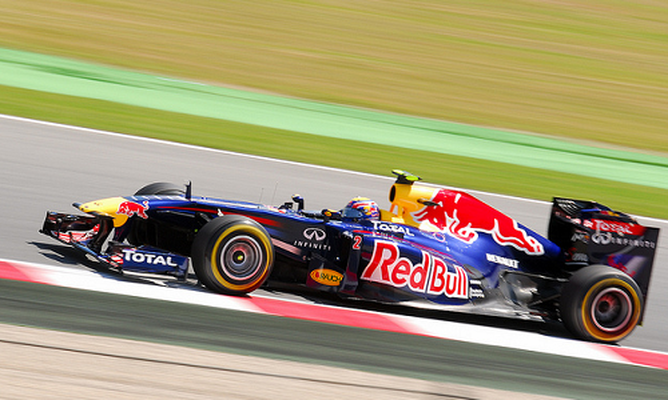It came as quite a shock when it was announced that Formula One’s governing body, the FIA, released their ‘final’ regulations for the next generation of major technical shake-ups in 2014.
The rules had not even passed through the proper ratification processes so whether or not these ‘final’ regulations are truly final or not is yet to be seen, but we can expect them to be broadly similar when they come into effect.
The rules had not even passed through the proper ratification processes so whether or not these ‘final’ regulations are truly final or not is yet to be seen, but we can expect them to be broadly similar when they come into effect.
As expected, the current 2.4l V8 model engines are to be replaced by 1.6l turbocharged V6 units with a lowered rev limit of 15,000 rpm. Getting ahead of the teams, the engines have already been restricted to a single turbo on each engine, which should please Bernie Ecclestone as the ever-important engine noise will be much more intense than it would be with a twin-turbo.
The FIA have also released the long list of engine components that will require homologation but as of yet there is no confirmation on whether this will include the ECU units and actuators. All current F1 cars use standardised ECUs developed by McLaren.
Modern-day F1 racers are equipped with Kinetic Energy Recovery Systems (KERS) which recovers the kinetic energy that is present in the waste heat created by the car’s braking process. It stores that energy and converts it into power that can be called upon to boost acceleration. Currently this is limited to a 60kW motor with no more than 400kJ released per lap (80bhp for 6.7 seconds).
The 2014 regulations will allow this limit to be increased to 120kW (or 160bhp) with an energy output of 4MJ, however there are limits to the KERS charging. Energy can only be stored at rate of 2MJ per lap, meaning that it would take two laps to fully charge the system. This ensures that in 2014, there will be a greater strategic variation in the use of KERS (or ERS, as it will be known).
The current seven-speed gearboxes are to make way for eight-speed gearboxes. The regulations require eight forward gear ratios which must be nominated by each team at the start of the year. 2014 will be the first time cars will have eight-speed gearboxes, it is thought that the rule was designed to allow teams to allocate one ratio for use when each car must use recovered electric power only in the pitlane.
Electrical motors have different torque characteristics than their internal combustion counterparts. The new regulations state that ‘the car must be run in electric mode [no ignition and no fuel supply to the engine] at all times when being driven in the pitlane’. There are, however, still fears that a car running in ‘electric mode’ will be silent and could prove dangerous to pit crews.
One of the most interesting changes to the rules is that each car will be equipped with the ability to allow the driver to start the engine from the cockpit as opposed to the use of external starters.
IndyCar had toyed with the idea of making this a new feature of the re-designed 2012 racer but decided that these would be too heavy and instead opted for the F1-Style anti-stall technology that the current models lack. F1′s 2014 regulations stipulate that ‘…it must be possible for the driver to start the engine at any time when seated normally at the wheel and without external assistance’.
The current minimum weight limit of 640kg is set to be increased to 660kg. Oddly, there will also be a minimum weight limit for the power unit. The FIA define the power unit as the engine itself as well as ancillaries, actuation systems and any energy-recovery systems. This is to be set at 155kg, only 2kg of which is permitted to be ballast.
This is the latest strategy in preventing excessive spenditure on engine development as part of the resource-restriction agreement (effectively restricting excessive research and spending on lightweight engine-component materials).
Mike Fryatt


 RSS Feed
RSS Feed